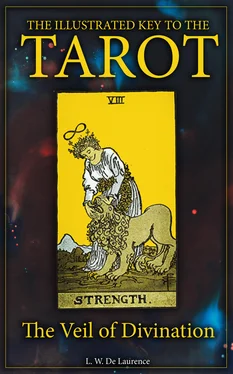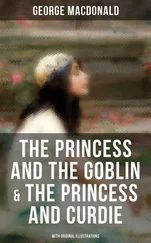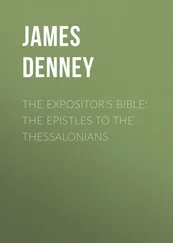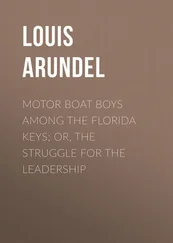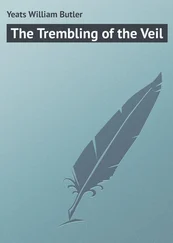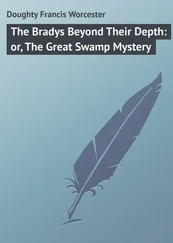New Light On The Renaissance , and as a taper at least in the darkness which, with great respect, might be serviceable to the zealous and all-searching mind of Mrs. Cooper-Oakley. Think only what the supposed testimony of watermarks on paper might gain from the
Tarot Card of the Pope or Hierophant, in connection with the notion of a secret Albigensian patriarch, of which Mr. Bayley has found in these same watermarks so much material to his purpose. Think only for a moment about the card of the High Priestess as representing the Albigensian church itself; and think of the Tower struck by Lightning as typifying the desired destruction of Papal Rome, the city on the seven hills, with the pontiff and his temporal power cast down from the spiritual edifice when it is riven by the wrath of God (Nature). The possibilities are so numerous and persuasive that they almost deceive in their expression one of the elect who has invented them. But there is more even than this, though I scarcely dare to cite it. When the time came for the Tarot cards to be the subject of their first formal explanation, the archæologist Court de Gebelin reproduced some of their most important emblems, and—if I may so term it—the codex which he used has served—by means of his engraved plates—as a basis of reference for many sets that have been issued subsequently. The figures are very primitive and differ as such from the cards of Etteilla, the Marseilles Tarot, and others still current in France. I am not a good judge in such matters, but the fact that every one of the Trumps Major might have answered for watermark purposes is shown by the cases which I have quoted and by one most remarkable example of the Ace of Cups.
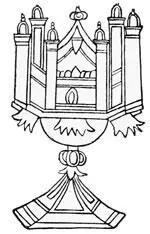
I should call it an eucharistic emblem after the manner of a ciborium, but this does not signify at the moment. The point is that Mr. Harold Bayley gives six analogous devices in his New Light On The Renaissance , being watermarks on paper of the seventeenth century, which he claims to be of Albigensian origin and to represent sacramental and Graal emblems. Had he only heard of the Tarot, had he known that these cards of divination, cards of fortune, cards of all vagrant arts, were perhaps current at the period in the South of France, I think that his enchanting but all too fantastic hypothesis might have dilated still more largely in the atmosphere of his dream. We should no doubt have had a vision of Christian Gnosticism, Manichæanism, and all that he understands by pure primitive Gospel, shining behind the pictures.
I do not look through such glasses, and I can only commend the subject to his attention at a later period; it is mentioned here that I may introduce with an unheard-of wonder the marvels of arbitrary speculation as to the history of the cards.
With reference to their form and number, it should scarcely be necessary to enumerate them, for they must be almost commonly familiar, but as it is precarious to assume anything, and as there are also other reasons, I will tabulate them briefly as follows:—
Table of Contents
Table of Contents
OTHERWISE, GREATER ARCANA
1. The Magus, Magician, or Juggler , the caster of the dice and mountebank, in the world of vulgar trickery. This is the colportage interpretation, and it has the same correspondence with the real symbolical meaning that the use of the Tarot in fortune-telling has with its mystic construction according to the secret science of symbolism. I should add that many independent students of the subject, following their own lights, have produced individual sequences of meaning in respect of the Trumps Major, and their lights are sometimes suggestive, but they are not the true lights. For example, Eliphas Lévi says that the Magus signifies that unity which is the mother of numbers; others say that it is the Divine Unity; and one of the latest French commentators considers that in its general sense it is the will.
2. The High Priestess, the Pope Joan , or Female Pontiff; early expositors have sought to term this card the Mother, or Pope's Wife, which is opposed to the symbolism. It is sometimes held to represent the Divine Law and the Gnosis, in which case the Priestess corresponds to the idea of the Shekinah . She is the Secret Tradition and the higher sense of the instituted Mysteries.
3. The Empress , who is sometimes represented with full face, while her correspondence, the Emperor, is in profile. As there has been some tendency to ascribe a symbolical significance to this distinction, it seems desirable to say that it carries no inner meaning. The Empress has been connected with the ideas of universal fecundity and in a general sense with activity.
4. The Emperor , by imputation the spouse of the former. He is occasionally represented as wearing, in addition to his personal insignia, the stars or ribbons of some order of chivalry. I mention this to show that the cards are a medley of old and new emblems. Those who insist upon the evidence of the one may deal, if they can, with the other. No effectual argument for the antiquity of a particular design can be drawn from the fact that it incorporates old material; but there is also none which can be based on sporadic novelties, the intervention of which may signify only the unintelligent hand of an editor or of a late draughtsman.
5. The High Priest or Hierophant , called also Spiritual Father, and more commonly and obviously the Pope. It seems even to have been named the Abbot, and then its correspondence, the High Priestess, was the Abbess or Mother of the Convent. Both are arbitrary names. The insignia of the figures are papal, and in such case the High Priestess is and can be only the Church, to whom Pope and priests are married by the spiritual rite of ordination. I think, however, that in its primitive form this card did not represent the Roman Pontiff.
6. The Lovers or Marriage. This symbol has undergone many variations, as might be expected from its subject. In the eighteenth century form, by which it first became known to the world of archæological research, it is really a card of married life, showing father and mother, with their child placed between them; and the pagan Cupid above, in the act of flying his shaft, is, of course, a misapplied emblem. The Cupid is of love beginning rather than of love in its fulness, guarding the fruit thereof. The card is said to have been entitled Simulacrum fidei , the symbol of conjugal faith, for which the rainbow as a sign of the covenant would have been a more appropriate concomitant. The figures are also held to have signified Truth, Honor and Love, but I suspect that this was, so to speak, the gloss of a commentator moralizing. It has these, but it has other and higher aspects.
7. The Chariot. This is represented in some extant codices as being drawn by two sphinxes, and the device is in consonance with the symbolism, but it must not be supposed that such was its original form; the variation was invented to support a particular historical hypothesis. In the eighteenth century white horses were yoked to the car. As regards its usual name, the lesser stands for the greater; it is really the King in his triumph, typifying, however, the victory which creates kingship as its natural consequence and not the vested royalty of the fourth card. M. Court de Gebelin said that it was Osiris Triumphing, the conquering sun in spring-time having vanquished the obstacles of winter. We know now that Osiris rising from the dead is not represented by such obvious symbolism. Other animals than horses have also been used to draw the currus triumphalis , as, for example, a lion and a leopard.
Читать дальше
